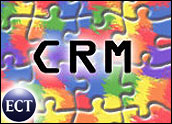
It has taken some time to assemble the ingredients, but the CRM (customer relationship management) industry is finally poised to deliver robust mobile offerings. If you think you’ve heard this before, that’s because you have — in 2004, in 2005 and, yes, last year as well.
To be sure, there are mobile CRM apps available on the market that have attracted devoted users who will attest they cannot do without them. As a general category, though, mobile CRM has never gained the traction that even several CRM niche applications have acquired over the years.
It is a development — or rather, undevelopment — that is all the more surprising in light of consumers’ love affairs with smartphones and PDAs (personal digital assistants).
Part of the problem is that with the initial attempts at mobile CRM, vendors merely tried to replicate the original CRM system for use on a mobile device, says Yankee Group analyst Sheryl Kingstone.
One Size Does Not Fit All
“Just placing a [sales force automation] application on a PDA does not necessarily add value. In fact, in most cases it will decrease usability,” she told CRM Buyer.
“The whole point for the mobile user is to be more business process-oriented, so salespeople can do more than just pursue opportunities and leads,” notes Kingstone. “They have to have access to orders — access to inventory.”
Ironically, early SFA applications — and even some current versions — did not offer such functionality to sales reps. “Unfortunately, mobile apps did not seem to learn from those mistakes until later,” Kingstone remarks.
An effective mobile CRM app is the last mile in sales effectiveness — a long last mile in the eyes of some sales reps who have been frustrated with trying to sync to a corporate database while on the road, she concludes.
These applications, it is now understood, need to be easy to get information into and out of — they must be semi-connected and not browser-based, for instance. They should also provide events and triggers so a salesperson doesn’t have to enter a lot of data on a tiny keyboard.
Signs of Emergence
So, have CRM vendors finally learned their lessons? With so many false positives, few analysts — or vendors, for that matter — are willing to take a leap of faith and boldly proclaim 2007 or 2008 “the year of mobile CRM.”
Promising hints, though, do exist. Form factors on mobile devices continually improve — as does sync technology.
Oracle recently announced that Siebel Wireless CRM applications will be available on Research In Motion’s BlackBerry smartphones. Of course, before Oracle acquired it, Siebel developed some of the earliest mobile CRM apps to rave reviews by users in such specialized fields and pharmaceutical sales or utility field service.
“As the form factors got smaller, we concentrated on building apps tailored to handheld devices for these industries,” Edward Abbo, senior vice president of application development at Oracle, told CRM Buyer.
The difference, he says, is that “those devices were tailored to specific functions for end users, but this is making a broader set of customer data available to mobile professionals.”
Another jump in industry functionality came last year, when Salesforce.com rolled out AppExchange Mobile, a feature developed using proprietary software from Sendia, a wireless business platform company that it acquired for US$15 million in cash. The new functionality was a huge extension of Salesforce.com’s platform — and footprint in the enterprise — because it allowed any firm that developed a third-party application on AppExchange to automatically use it on BlackBerry devices and cell phones.
Also last year, Sage Software acquired Corum Corporation, a privately held software consulting and development company that specializes in mobile CRM technology. Its vision, it said at the time, was to extend Corum as a mobility platform across multiple product lines — including ACT, Sage CRM and SageCRM.com.
Web 2.0 Mobile Style?
It was the Sage acquisition of Corum that made Barton Goldenberg, president ofISM, think that mobile CRM was turning a corner, he said — and that within two years most CRM applications would also be accessible via a mobile device.
“Vendors began to seriously think how they would make a lot of information available to users in the field — and do it right once and for all,” he told CRM Buyer.
Goldenberg points to several vendors that are “getting it right.” Indeed, ISM recently announced the winners of its second annual Real Time CRM Software Awards, many of which were mobile apps. Winners were C2 CRM v. 8.0; growBusiness Solutions v. 3.1; Microsoft CRM v. 3.0; NetSuite CRM v. 11.0 and NetSuite v. 11.0; Salespage CRM; Saratoga CRM 6.5.3; Siebel 8.0; and StayinFront CRM v. 9.3.
“The industry is experiencing an enormous growth in mobile capabilities as new vendors enter the game,” he says.
He goes so far as to forecast that mobile CRM will overtake traditional CRM’s growth rate in two to three years.























































